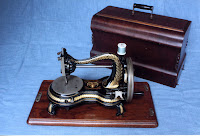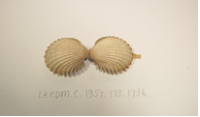 Every so often a family history enquiry comes along that sheds new light on objects which have been sitting quietly in the museum collections. When Howard Beck contacted us to see if we still had a zither belonging to his ancestor Walter Stainton Meeson I was able to show him not only the instrument in question (actually a dulcimer - which is similar to a zither, but the stri
Every so often a family history enquiry comes along that sheds new light on objects which have been sitting quietly in the museum collections. When Howard Beck contacted us to see if we still had a zither belonging to his ancestor Walter Stainton Meeson I was able to show him not only the instrument in question (actually a dulcimer - which is similar to a zither, but the stri ngs are struck by hammers), but also a photograph and the bronze medal and certificate he won for making it. In exchange, Mr Beck has provided a full biography of the man we previously only knew as W.S. Meeson of Leeds.
ngs are struck by hammers), but also a photograph and the bronze medal and certificate he won for making it. In exchange, Mr Beck has provided a full biography of the man we previously only knew as W.S. Meeson of Leeds.
It turns out that Walter was born in Stockton-on-Tees, son of a master brush-maker and beer retailer. We don't know how he gained his musical education but he seems to have been living in Shoreditch, London in 1888 where at the age of 22 he married his first wife Eliza Elizabeth Nockles. This is also the year in which he made the dulcimer and entered it into the Workmen's Industrial Exhibition held at the People's Palace for East London on Mile End Road. It won him a bronze medal.
The plaque on the dulcimer reads "W.S. Meeson, Leeds" and he was certainly living in the city by 1911 when he appears at Oban Villas, 89 Leopold Street in the census. The dulcimer is specifically mentioned in his will and was passed to his son Harold Meeson. Walter had made his living as a music teacher, musical instrument maker and piano tuner and died a wealthy man in 1928.
Quite what inspired him to make a dulcimer is unclear. The instrument originated at least 2000 years ago and was popular in the middle ages. It is the ancestor of hammered keyboard instruments such as the pianoforte. Dulcimers are commonly used in the folk music of eastern Europe but are also played in the traditional music of Wales, East Anglia and Northumbria.
The dulcimer is currently at the Leeds Museum Discovery Centre.












